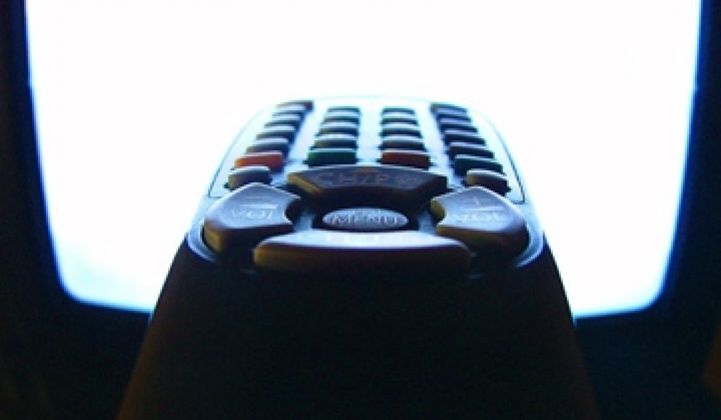The increasingly ugly fight over energy efficiency standards for TVs will ramp up again tomorrow when the California Energy Commission will meet to determine whether or not to adopt proposed TV regulations.
The meeting takes place at 10:00 a.m. in Sacramento. Representatives from the CEC and the electronics industry will attend.
It may also be deferred. The Consumer Electronics Association sent in 91 pages of commentary to the CEC at 4:55 p.m. last night.
The heart of the debate is a set of regulations, penned by the CEC and endorsed by organizations like the National Resources Defense Council, which would require TVs measuring 58 inches or less to meet efficiency standards. By 2011, TVs would have to be 33 percent more efficient than they are today and 49 percent more efficient than they are at the end of 2013.
One-thousand TVs already meet the 2011 standard and over 300 meet the 2013 standard, the CEC points out. A 42-inch screen under the regs would consume no more than 183 watts in 2011 and 115 watts in 2013.
"There is technology available and there is no correlation between higher prices and energy efficiency," said Adam Gottlieb, a spokesman for the CEC.
The industry's opinion? Power consumption has been going steadily down for years. Some current 42-inch plasmas consume about half as much power (142 watts) as a 1991CRT (310 watts) and the plasma is twice as big. Several manufacturers in Japan have already begun to tout things like automatic shut-off to save power. Hitachi has a prototype 32-inch TV that only uses 31 watts of power.
Much of the data propounded by the CEC and the utilities is old and wrong, the industry adds.
The regulations, moreover, aren't simple static bars that TV makers have to limbo under, manufacturers assert, but a tangle of regulations that will require getting approval for TV designs before a rollout, a challenge in an industry with constant refresh cycles. The regulations set forth standards for auto turn-off, heat management, consumer disclosures and other issues. OLED TVS? They could cut power drastically. Too bad they still cost thousands of dollars to make.
"They get into micromanaging television design," said Peter Fannon, vice president of technology, policy, government and regulation at Panasonic. "If you are going to regulate power, then you have to leave the design trade-offs in place to do that."
At a minimum, the CEC should put off acting until 2011 to see if the industry behaves, Fannon said.
"At least defer," he said. "Regulations have unintended consequences. If we knew what they were we wouldn't worry so much."
There is also a whiff of cultural superiority in the regulations, the industry implies, with the CEC and allies seemingly endorsing the idea that people should gravitate toward smaller screens. The CEC denies this.
The CEC also touts its historical record. Appliance manufacturers fought vigorously against efficiency regulations in the mid-1970s. Those regulations have helped California keep per capita power consumption level for 30 years. The experience in California has gone national with the appointment of Steve Chu, former head of Lawrence Berkeley Labs, as the Secretary of Energy.
True, the TV industry admits, but the historical analogy is flawed. Appliance power consumption was skyrocketing at the time. TV power consumption is not.
The two sides also disagree on the amount of power TVs consume. The industry says it is around 5 percent of a household's electricity. The CEC puts it closer to 10 percent, but admits that their figures include set-top boxes. The Department of Energy says household electronics not including computers, but including set-top boxes, DVD players and stereos, comes to 8 percent. Thus, they both seem to be only exaggerating.
The CEC had a hearing on the regulations in early October and so did committees for the state senate and assembly.
Photo via Flickr/Creative Commons.



